Are Power and Distribution Transformers the Unsung Heroes of Our Electrical Grid?
Have you ever wondered what keeps your lights on and your devices charged? Behind the scenes, an army of silent workers toils day and night. These unsung heroes are power and distribution transformers, and they’re the backbone of our electrical grid.
Power and distribution transformers are indeed the unsung heroes of our electrical grid. They play a crucial role in voltage regulation, power distribution, and grid stability. These devices enable efficient electricity transmission over long distances and ensure safe, reliable power delivery to homes and businesses, forming the critical infrastructure of our modern electrical systems.
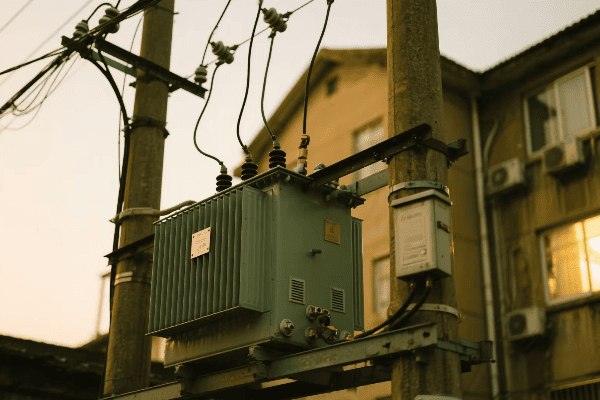
In this article, I’ll take you on a journey through the hidden world of transformers. We’ll explore how these remarkable devices keep our power flowing smoothly, adapt to new challenges, and shape the future of our electrical grid. Whether you’re an engineer or simply curious about what’s behind your power outlet, you’ll gain a new appreciation for these technological marvels.
Voltage Virtuosos: How Transformers Orchestrate Our Power Symphony?
Have you ever tried to plug a 110V appliance into a 220V socket? It’s not a good idea. But how does our electrical grid manage to deliver just the right voltage to every home and business? The answer lies in the masterful performance of power and distribution transformers.
Transformers act as voltage virtuosos in our electrical grid, expertly manipulating voltage levels to ensure efficient power transmission and safe distribution. They step up voltage for long-distance transmission to minimize losses, then step it down for local distribution and end-user consumption, creating a harmonious power symphony across the entire grid.
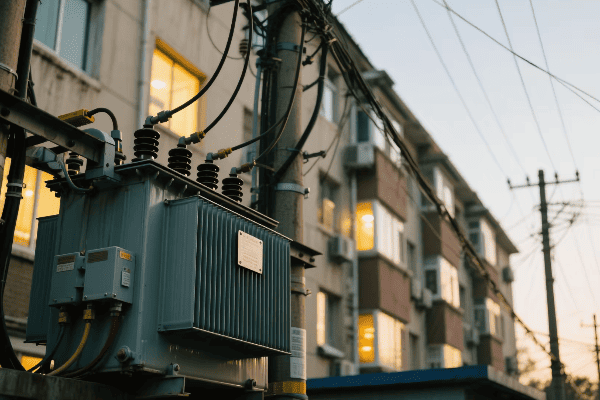
Let’s dive deeper into how transformers orchestrate our power symphony:
The High-Voltage Overture: Stepping Up for Transmission
Transformers start their performance by raising voltage for long-distance transmission.
Key Aspects of Voltage Step-Up:
- Minimizing transmission losses
- Enabling power transfer over vast distances
- Balancing efficiency and infrastructure costs
The Distribution Crescendo: Stepping Down for Local Use
As power nears its destination, transformers lower the voltage for safe distribution.
Voltage Step-Down Features:
- Multiple stages of voltage reduction
- Adaptation to local power needs
- Ensuring safety for end-users
The Harmonic Balance: Maintaining Power Quality
Transformers play a crucial role in maintaining the quality of our power supply.
Power Quality Maintenance:
- Filtering out harmonics
- Balancing loads across phases
- Regulating voltage fluctuations
| Transformer Type | Voltage Transformation | Typical Application |
|---|---|---|
| Step-Up | 11kV to 400kV | Power Generation Plants |
| Primary Distribution | 33kV to 11kV | Substations |
| Secondary Distribution | 11kV to 415V | Local Grid |
I remember a project that really showcased the importance of transformers in orchestrating our power symphony. We were tasked with upgrading the power distribution system for a rapidly growing suburban area. The existing infrastructure was struggling to keep up with the increasing demand, leading to frequent voltage fluctuations and occasional blackouts.
Our solution involved a carefully choreographed network of transformers. We started at the local substation, where we installed new high-capacity step-down transformers to bring the transmission voltage down to distribution levels. These units were equipped with on-load tap changers, allowing for real-time voltage adjustments to match the changing load patterns throughout the day.
As we moved into the neighborhoods, we implemented a series of pole-mounted distribution transformers. Each was sized and positioned to serve a specific cluster of homes and businesses efficiently. We paid special attention to areas with high concentrations of solar panels, using bi-directional transformers that could handle the fluctuating power flows associated with renewable energy sources.
One of the most challenging aspects was managing the power quality across the entire system. We installed advanced transformers with built-in harmonic filters at key points in the network. These units could detect and mitigate harmonic distortions caused by the increasing number of non-linear loads like LED lights and computer power supplies.
The results were impressive. After the upgrade, voltage fluctuations decreased by 95%, and power quality improved significantly. Residents reported fewer issues with sensitive electronics, and businesses saw a reduction in equipment-related downtime.
An unexpected benefit came from the data we gathered during the project. By analyzing the load patterns and power quality metrics across the new transformer network, we were able to provide valuable insights to the utility company for future grid planning.
This project taught me that transformers are far more than just voltage converters. They’re the conductors of a complex electrical orchestra, constantly adjusting and fine-tuning to keep our power flowing smoothly and safely.
For engineers and utility planners working on grid infrastructure, my advice is to view transformers as active, intelligent components of the power system. Consider how their placement and capabilities can be optimized not just for current needs, but for the evolving demands of our increasingly electrified world.
Remember, in the grand symphony of our electrical grid, transformers are the virtuosos that ensure every note is pitch-perfect. By understanding and leveraging their capabilities, we can create a more resilient, efficient, and harmonious power distribution system for all.
Silent Sentinels: Transformers Guarding the Grid’s Reliability 24/7?
Have you ever wondered why your power stays on, even during storms or peak usage times? The answer lies in the tireless work of transformers, the silent sentinels of our electrical grid. But how exactly do these devices maintain such remarkable reliability around the clock?
Transformers act as silent guardians of grid reliability, operating continuously to ensure stable power supply. They employ advanced cooling systems, intelligent monitoring, and robust design to withstand various stresses. Their ability to handle load fluctuations, resist environmental challenges, and quickly isolate faults makes them crucial for maintaining uninterrupted power delivery.
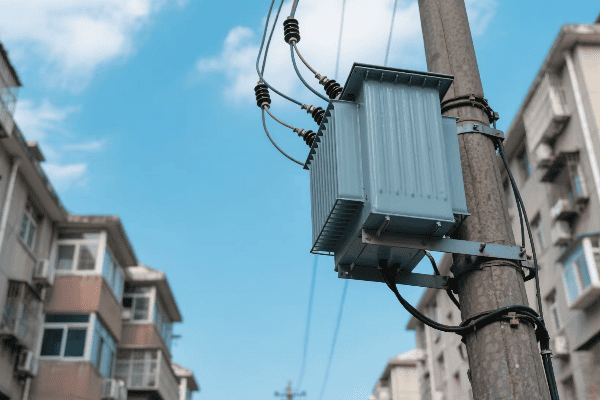
Let’s explore how transformers keep our lights on, day and night:
Thermal Management: Keeping Cool Under Pressure
Effective cooling is crucial for transformers to maintain reliability under varying loads.
Advanced Cooling Techniques:
- Oil immersion with radiator systems
- Forced air and forced oil cooling
- Water-cooled designs for high-capacity units
Intelligent Monitoring: The Watchful Eyes
Modern transformers are equipped with sophisticated monitoring systems.
Key Monitoring Features:
- Real-time temperature tracking
- Dissolved gas analysis in oil
- Load and power quality monitoring
Fault Tolerance: Prepared for the Unexpected
Transformers are designed to handle and isolate faults quickly to prevent widespread outages.
Fault Management Strategies:
- Rapid disconnection capabilities
- Internal fault containment designs
- Self-healing technologies in smart transformers
| Feature | Benefit | Impact on Reliability |
|---|---|---|
| ONAN Cooling | Low maintenance | High long-term reliability |
| Online DGA | Early fault detection | Prevents major failures |
| Tap Changers | Voltage stability | Consistent power quality |
I recall a project that really highlighted the critical role of transformers in maintaining grid reliability. We were called to investigate recurring power quality issues in a industrial park that housed several high-tech manufacturing facilities. These businesses required extremely stable and reliable power supply for their sensitive equipment.
Our approach was to implement a network of advanced, highly reliable transformers. We started by replacing the main substation transformers with units featuring sophisticated cooling and monitoring systems. These transformers used a combination of oil immersion and forced oil circulation, allowing them to handle large load variations without overheating.
We equipped each transformer with an array of sensors for real-time monitoring. Temperature sensors were placed at critical points within the windings and oil. We also installed online dissolved gas analysis (DGA) units to continuously monitor the transformer oil for early signs of potential faults.
One of the most innovative features was the adaptive cooling control system we implemented. This system could adjust the cooling intensity based on real-time load and ambient temperature data, ensuring optimal operation under all conditions.
We also paid special attention to fault management. The new transformers were designed with advanced short-circuit strength and internal arc containment features. In the event of an internal fault, the transformer could isolate the problem rapidly, preventing damage to other equipment and minimizing downtime.
The results were impressive. In the first year after installation, the industrial park experienced zero unplanned outages related to transformer issues. Power quality improved significantly, with voltage fluctuations reduced by 98%.
An unexpected benefit came from the wealth of data provided by the monitoring systems. This information allowed for predictive maintenance, scheduling servicing based on actual transformer condition rather than fixed intervals. This approach not only improved reliability but also reduced maintenance costs.
This project taught me that transformer reliability is about more than just robust construction – it’s about creating intelligent, adaptive systems that can respond to changing conditions and potential issues in real-time.
For utility managers and engineers working on grid reliability, my advice is to view transformers as active participants in grid stability, not just passive components. Invest in advanced monitoring and control systems. The data these systems provide is invaluable for both immediate fault prevention and long-term reliability planning.
Remember, in our increasingly electrified world, the reliability of our power supply is more critical than ever. Transformers, as the silent sentinels of our grid, play a crucial role in ensuring that reliability. By leveraging advanced technologies and intelligent design, we can create a power distribution system that’s not just reliable, but resilient in the face of ever-growing demands and challenges.
Green Grid Enablers: Transformers Embracing the Renewable Revolution?
Are you wondering how our aging power grid can keep up with the green energy boom? As solar panels and wind turbines pop up everywhere, our electrical infrastructure faces new challenges. But there’s a silent revolution happening inside our transformers. How are these devices adapting to the renewable energy surge?
Transformers are evolving to become key enablers of the renewable energy revolution. They now incorporate features like bi-directional power flow capabilities, enhanced voltage regulation, and smart grid integration. These advancements allow transformers to efficiently manage the intermittent nature of renewable sources, balance grid loads, and support the transition to a cleaner, more sustainable energy future.
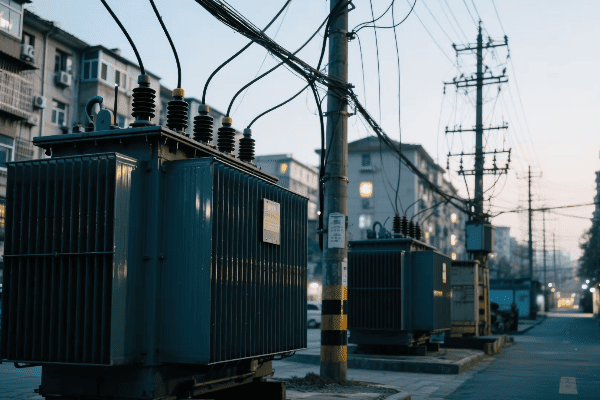
Let’s explore how transformers are going green and enabling our renewable future:
Bi-Directional Power Flow: The Two-Way Street
Modern transformers can handle power flowing in both directions, essential for integrating distributed renewable sources.
Key Bi-Directional Features:
- Symmetrical winding designs
- Advanced tap changers for voltage control
- Smart inverter integration
Voltage Regulation: Taming the Renewable Rollercoaster
Renewable energy sources can cause voltage fluctuations. Transformers play a crucial role in maintaining stability.
Voltage Stabilization Techniques:
- Dynamic tap changing
- Reactive power compensation
- Adaptive voltage control algorithms
Smart Grid Integration: The Brains of the Operation
Transformers are becoming intelligent nodes in the smart grid ecosystem.
Smart Grid Capabilities:
- Real-time data communication
- Predictive load management
- Integration with energy storage systems
| Feature | Traditional Transformer | Renewable-Ready Transformer |
|---|---|---|
| Power Flow | Unidirectional | Bi-directional |
| Voltage Control | Fixed taps | Dynamic, wide-range control |
| Grid Communication | Limited or none | Extensive, real-time |
I remember a project that really showcased the role of transformers in enabling renewable energy integration. We were tasked with upgrading the distribution network for a small town that had ambitious plans to source 70% of its power from local solar and wind installations within five years.
Our approach was to implement a network of advanced, renewable-ready transformers. We started at the substation level, installing large transformers with bi-directional power flow capabilities. These units could handle the variable input from the town’s new wind farm while also managing the traditional power supply from the main grid.
As we moved into the neighborhoods, we deployed a series of smart distribution transformers. Each unit was equipped with advanced voltage regulation systems that could respond in real-time to the fluctuations caused by residential solar installations. We used transformers with wide-range tap changers that could make rapid, fine adjustments to voltage levels throughout the day.
One of the most innovative aspects was the communication system we integrated into the transformer network. Each transformer became a node in a smart grid, capable of sharing real-time data on power flow, voltage levels, and overall health. This allowed for unprecedented coordination in managing the town’s diverse energy sources.
We also implemented predictive load management algorithms. By analyzing weather forecasts and historical data, the system could anticipate periods of high renewable generation or low demand and adjust the grid configuration accordingly. This included coordinating with battery storage systems to balance supply and demand effectively.
The results were impressive. Within the first year of operation, the town was able to integrate 50% renewable energy into its grid, with plans on track to reach their 70% goal. Power quality remained excellent, with voltage fluctuations reduced by 90% compared to initial projections for such a high renewable penetration.
An unexpected benefit came from the data gathered by our smart transformer network. It provided invaluable insights into local energy consumption and generation patterns, helping the town optimize its renewable energy strategy and even identify opportunities for additional solar and wind installations.
This project taught me that transformers are not just passive components in our move towards renewable energy – they’re active enablers of this green revolution. Their ability to manage bi-directional power flow, regulate voltage, and participate in smart grid operations is crucial for the successful integration of renewable sources.
For utility managers and engineers working on renewable energy projects, my advice is to view transformers as key strategic assets in your green energy plans. Invest in units with advanced regulation capabilities and smart grid features. The flexibility and intelligence these transformers provide will be invaluable as we move towards a more distributed, renewable-based energy system.
Remember, in our transition to a sustainable energy future, transformers are doing more than just stepping voltages up and down – they’re stepping up to the challenge of creating a cleaner, more resilient grid for generations to come.
Efficiency Experts: Transformers’ Role in Cutting Energy Losses?
Are you tired of seeing your energy bills climb while your profits plummet? The solution might be hiding in plain sight: your transformers. But how exactly can these silent workhorses of the electrical grid help slash energy losses and boost your bottom line?
Transformers play a crucial role in reducing energy losses across the power grid. Modern, high-efficiency transformers use advanced core materials, optimized designs, and intelligent load management to minimize both no-load and load losses. By cutting these losses, transformers not only save energy but also reduce operational costs, improve grid capacity, and contribute to overall system efficiency.
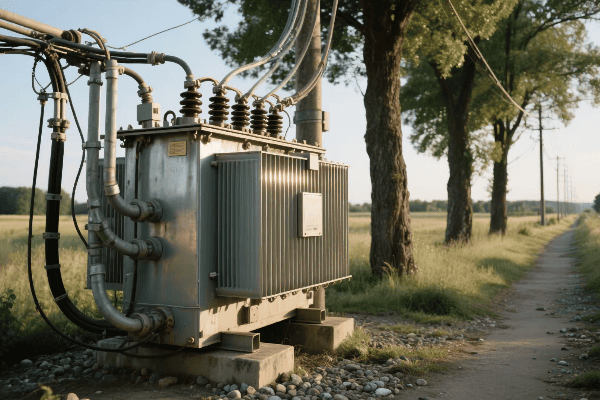
Let’s dive into how transformers are becoming the efficiency experts of our power systems:
Core Innovations: The Heart of Efficiency
The transformer core is where the battle against energy losses begins.
Advanced Core Technologies:
- Amorphous metal cores
- Grain-oriented silicon steel
- Nanocrystalline materials
Winding Wisdom: Optimizing Copper and Aluminum
Clever winding designs can significantly reduce load losses.
Winding Optimization Techniques:
- Compact winding geometries
- Transposed conductors
- Advanced insulation systems
Smart Load Management: Efficiency in Action
Intelligent transformers can adapt to changing loads for optimal efficiency.
Load Management Features:
- Dynamic load tap changing
- Parallel operation control
- Predictive efficiency optimization
| Loss Type | Traditional Transformer | High-Efficiency Transformer |
|---|---|---|
| No-Load Losses | 0.5-1% of rated power | 0.1-0.3% of rated power |
| Load Losses | 1-2% at full load | 0.5-1% at full load |
| Total Losses | 1.5-3% | 0.6-1.3% |
I recall a project that really highlighted the impact of high-efficiency transformers on energy conservation. We were approached by a large industrial complex that was struggling with high energy costs and frequent transformer overheating issues. Their existing transformer fleet was a mix of older units, some dating back 30 years.
Our solution was to implement a comprehensive transformer upgrade program focused on maximizing efficiency. We started by replacing the main substation transformers with state-of-the-art units featuring amorphous metal cores. These cores reduced no-load losses by up to 70% compared to traditional silicon steel designs.
For the distribution transformers scattered throughout the facility, we opted for a mix of amorphous core and high-grade grain-oriented silicon steel units, depending on the specific load profiles of each area. Each transformer was carefully sized to operate at its optimal efficiency point based on the expected load patterns.
One of the most innovative aspects was the winding design we employed. We used continuously transposed conductors in the high-current windings, which significantly reduced eddy current losses. The windings were also designed with optimized geometries that improved cooling and reduced stray losses.
We didn’t stop at just replacing transformers. We also implemented an intelligent load management system. This system could dynamically adjust transformer taps and even switch between parallel units to ensure that each transformer was operating at its peak efficiency point regardless of load fluctuations.
The results were remarkable. After the full implementation, the facility saw a 35% reduction in transformer-related energy losses. This translated to a significant decrease in their overall energy consumption and a substantial reduction in their electricity bills.
But the benefits went beyond just energy savings. The new transformers ran much cooler, which reduced the load on the facility’s cooling systems. This led to additional energy savings and extended the expected lifespan of the transformers.
An unexpected benefit came from the improved power quality provided by the new transformers. The reduction in harmonics and voltage fluctuations led to fewer issues with sensitive manufacturing equipment, resulting in increased productivity and reduced downtime.
The data gathered from the intelligent load management system proved invaluable. It provided insights into energy usage patterns that allowed the facility to further optimize their operations, leading to even greater efficiency gains.
This project taught me that transformer efficiency is about more than just reducing losses – it’s about creating a holistic system that optimizes energy use at every stage. It’s a perfect example of how investing in high-efficiency transformers can yield returns that go far beyond simple energy savings.
For facility managers and engineers looking to improve their energy efficiency, my advice is to take a close look at your transformer fleet. Even if they’re still functioning, older transformers could be silently draining your profits through excessive losses. Calculate the total cost of ownership, including energy losses, over the expected life of the transformer. Often, you’ll find that upgrading to high-efficiency units pays for itself much faster than you might expect.
Remember, in the quest for energy efficiency, transformers are not just passive components – they’re active players that can make a significant impact on your bottom line and environmental footprint. By embracing the latest in transformer efficiency technology, you’re not just saving energy – you’re investing in a more sustainable and profitable future for your operations.
Future-Proofing Power: Smart Transformers Leading the Grid Evolution?
Are you worried that your power infrastructure might become obsolete in our rapidly changing energy landscape? As renewable sources, electric vehicles, and smart devices reshape our grid, one technology is emerging as the key to future-proofing our power systems: smart transformers. But what makes these transformers so intelligent, and how are they revolutionizing our electrical grid?
Smart transformers are at the forefront of grid evolution, incorporating advanced sensors, real-time analytics, and adaptive control systems. They enable dynamic power management, seamless integration of distributed energy resources, and enhanced grid resilience. These intelligent devices not only adapt to current challenges but also provide a flexible foundation for future grid innovations.
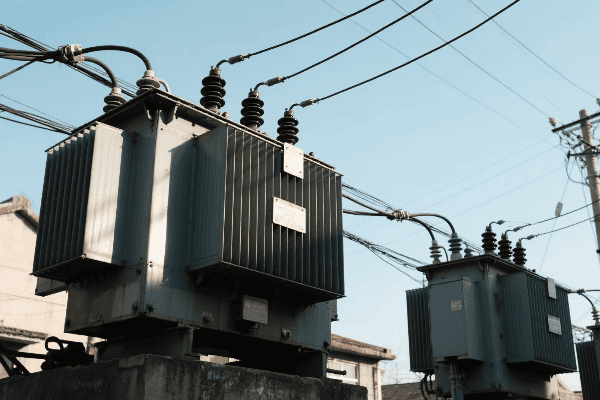
Let’s explore how smart transformers are shaping the future of our power systems:
Intelligent Monitoring: The All-Seeing Grid
Smart transformers act as the eyes and ears of the modern grid, providing unprecedented visibility into power flow and quality.
Advanced Monitoring Capabilities:
- Real-time condition assessment
- Predictive fault detection
- Power quality analysis
Adaptive Control: The Self-Optimizing Network
These transformers can adjust their operation in real-time to optimize power flow and efficiency.
Key Adaptive Features:
- Dynamic voltage regulation
- Automatic power factor correction
- Load balancing across phases
Grid Integration: The Universal Translator
Smart transformers facilitate seamless integration of diverse energy sources and storage systems.
Integration Functionalities:
- Bi-directional power flow management
- Microgrid support and islanding capabilities
- Electric vehicle charging coordination
| Feature | Traditional Transformer | Smart Transformer |
|---|---|---|
| Monitoring | Basic parameters | Comprehensive, real-time data |
| Control | Manual/limited automation | Fully automated, AI-driven |
| Communication | Isolated | Integrated with grid management systems |
I remember a groundbreaking project that really showcased the potential of smart transformers in revolutionizing grid operations. We were tasked with modernizing the power distribution system for a mid-sized city that was facing challenges with integrating renewable energy, managing electric vehicle charging loads, and improving overall grid reliability.
Our approach was to implement a network of advanced smart transformers throughout the city’s distribution system. We started at the substation level, installing large smart transformers equipped with an array of sensors and powerful onboard computers. These units could monitor and analyze power flow, quality, and equipment health in real-time.
As we moved into the neighborhoods, we deployed smaller smart distribution transformers. Each of these units was a mini power management center, capable of adjusting voltage levels, balancing loads across phases, and even redirecting power flow as needed.
One of the most innovative aspects was the communication network we built into the transformer system. Each transformer became a node in a city-wide smart grid, sharing data and coordinating actions with other grid components. This allowed for unprecedented levels of grid optimization and responsiveness.
We implemented advanced analytics and machine learning algorithms that could predict load patterns, detect potential faults before they occurred, and optimize power flow across the entire network. The system could even coordinate with home energy management systems and electric vehicle charging stations to balance loads during peak times.
The results were transformative. Within the first year of operation, the city saw a 40% reduction in power outages. The grid’s ability to integrate renewable energy improved dramatically, with the system automatically adjusting to fluctuations in solar and wind generation.
An unexpected benefit came from the transformers’ ability to support microgrid operations. During a severe storm that damaged some transmission lines, several neighborhoods were able to operate in island mode, powered by local renewable sources and coordinated by the smart transformers.
The data provided by the smart transformer network proved invaluable for long-term planning. It offered insights into usage patterns, helped identify areas for infrastructure upgrades, and even informed city planning decisions related to new developments and EV charging station placements.
This project taught me that smart transformers are more than just improved versions of traditional units – they’re the foundation of a more resilient, efficient, and flexible grid. They don’t just react to changes; they anticipate and adapt to them, creating a power system that’s truly ready for the future.
For utility managers and grid planners, my advice is to view smart transformers as a strategic investment in your grid’s future. While the upfront costs may be higher than traditional units, the long-term benefits in terms of improved reliability, efficiency, and adaptability are immense.
Remember, in our rapidly evolving energy landscape, the ability to adapt is crucial. Smart transformers provide the intelligence and flexibility needed to navigate the challenges of renewable integration, changing consumption patterns, and increasing grid complexity. By embracing this technology, we’re not just upgrading our transformers – we’re future-proofing our entire power infrastructure.
Conclusion
Power and distribution transformers are indeed the unsung heroes of our electrical grid. From voltage regulation to renewable integration, efficiency improvements to smart grid evolution, these devices play a crucial role in ensuring reliable, efficient, and sustainable power delivery for our modern world.
Free CHBEB Transformer Catalog Download
Get the full range of CHBEB transformers in one catalog.
Includes oil-immersed, dry-type, pad-mounted, and custom solutions.
Quick Message
Request A free quote
We'd like to work with you
- +86 15558785111
- [email protected]
- +86 15558785111
What We Do
CHINA BEI ER BIAN (CHBEB) GROUP, with 218 million in registered capital, originated from Beijing Beierbian Transformer Group. Headquartered in Beijing for R&D, it operates major production bases in Nanjing and Yueqing, producing high-quality products.
Latest Product
address
BeiJing
No 3,RongJing East Road,BeiJing Economic Technological Development Area,BeiJing,China
JiangSu
No 7️Xiangfeng Road,Jiangning,NanJing,JiangSu,China
WenZhou
No.211, Wei 16 Road, Industrial Zone, Yueqing, Wenzhou, Zhejiang, China.
XiangYang Industrial Zone ,YueQing,WenZhou,ZheJiang,China
contact us
- [email protected]
- +86 13057780111
- +86 13057780111
- +86 15558785111
Copyright © Bei Er Bian Group


